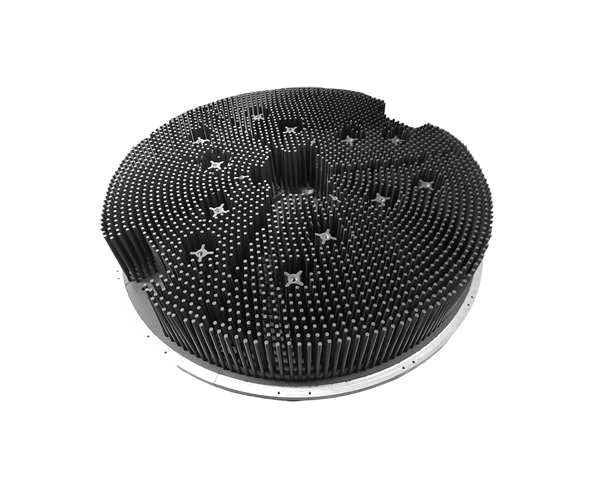2025-03-20 hits:0 source:News

Large aluminum alloy die - casting products present a series of formidable challenges in the manufacturing process. One of the primary difficulties lies in ensuring uniform filling of the mold cavity. Due to the large size of the product, it is more prone to incomplete filling, especially in thin - walled sections or complex geometries. The molten aluminum alloy may not flow smoothly to all parts of the mold, leading to defects such as cold shuts and misruns. For example, in the production of large automotive engine blocks, which are often made through aluminum alloy die - casting, the intricate internal channels and cavities make it extremely difficult to achieve complete filling. Specialized gating and runner systems need to be designed to direct the flow of the molten metal precisely, but this requires in - depth knowledge of fluid dynamics and extensive trial - and - error adjustments.
Another significant challenge is related to the control of shrinkage. Aluminum alloy undergoes significant volume change during solidification. In large - scale die - casting, the uneven cooling rate across different parts of the product can cause severe shrinkage cavities and porosity. The thicker sections of the product cool more slowly than the thinner ones, resulting in internal stresses and potential cracks. To mitigate this, precise control of the cooling process is necessary. This may involve the use of cooling channels within the mold to regulate the temperature gradient, but designing an effective cooling system for large molds is a complex task. It requires careful consideration of the mold's geometry, the heat transfer properties of the aluminum alloy, and the desired production rate.
The quality of the die itself is also a major concern. Manufacturing large - scale dies for aluminum alloy casting demands high - precision machining and high - quality die materials. The dies must withstand high pressure and temperature cycles during the casting process. As the size of the die increases, the risk of thermal fatigue and mechanical wear becomes more pronounced. A small crack or defect in the die can quickly propagate and lead to poor - quality castings or even die failure. Moreover, the cost of producing large dies is extremely high, and any downtime due to die repair or replacement can be costly in terms of production efficiency and overall manufacturing costs.
In addition, handling and transporting large aluminum alloy die - casting products pose logistical challenges. These products are often heavy and bulky, requiring specialized equipment for lifting, moving, and subsequent processing. Any improper handling during the manufacturing process can cause damage to the product, further increasing the production cost.
Read recommendations:
extruded aluminum electronics enclosure
lf you have any questions or comments, you can leave us a message and we will reply to you as soon as possible
